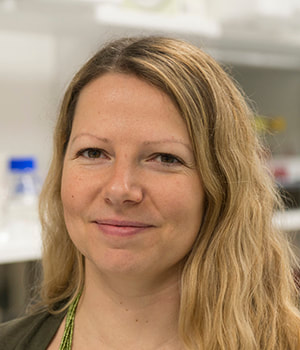Abstract
Skin architecture and its function are determined by a rich variety of epithelial, mesenchymal and immune cells that together orchestrate skin homeostasis, including cyclical hair growth and barrier function. Previously, my lab pioneered the use of single-cell RNA-sequencing in mouse skin by generating a comprehensive molecular and spatial atlas of epithelial and stromal cells during hair growth and rest. These studies revealed underlying molecular programs during progenitor-cell commitment and lineage differentiation, as well as spatiotemporal fibroblast heterogeneity and potential epithelial-stromal interactions. The importance of cell-type specific signaling during homeostasis, and the unrecognized potential of cell-type restricted signaling-changes were exemplified by our recent discovery of how to induce new hair follicles in adult mouse skin by modulating a single signaling pathway. Building on the molecular knowledge and computational skills gained, our ongoing work uncovers new insights in the molecular orchestration of embryonic hair follicle development, the coordination of adult epidermal stem cell differentiation, as well as new roles of perivascular fibroblasts in cutaneous wound repair.
Skin architecture and its function are determined by a rich variety of epithelial, mesenchymal and immune cells that together orchestrate skin homeostasis, including cyclical hair growth and barrier function. Previously, my lab pioneered the use of single-cell RNA-sequencing in mouse skin by generating a comprehensive molecular and spatial atlas of epithelial and stromal cells during hair growth and rest. These studies revealed underlying molecular programs during progenitor-cell commitment and lineage differentiation, as well as spatiotemporal fibroblast heterogeneity and potential epithelial-stromal interactions. The importance of cell-type specific signaling during homeostasis, and the unrecognized potential of cell-type restricted signaling-changes were exemplified by our recent discovery of how to induce new hair follicles in adult mouse skin by modulating a single signaling pathway. Building on the molecular knowledge and computational skills gained, our ongoing work uncovers new insights in the molecular orchestration of embryonic hair follicle development, the coordination of adult epidermal stem cell differentiation, as well as new roles of perivascular fibroblasts in cutaneous wound repair.
Bio
Maria Kasper is Associate Professor at the Karolinska Institute in Sweden. She received her PhD at the University of Salzburg, Austria, in human genetics and molecular tumor biology. In 2013, after a 6-year postdoctoral training in skin biology at the Karolinska Institute, she established her own lab focusing on skin stem cell dynamics by combining multicolor lineage tracing in mice with single-cell RNA sequencing. She has contributed with significant work in the fields of skin biology and single-cell transcriptomics and received national and international recognitions such as the Swedish Cancer Society Young Investigator Award, Ragnar Söderberg Fellow in Medicine and the LEO Foundation Gold Award.
Maria Kasper is Associate Professor at the Karolinska Institute in Sweden. She received her PhD at the University of Salzburg, Austria, in human genetics and molecular tumor biology. In 2013, after a 6-year postdoctoral training in skin biology at the Karolinska Institute, she established her own lab focusing on skin stem cell dynamics by combining multicolor lineage tracing in mice with single-cell RNA sequencing. She has contributed with significant work in the fields of skin biology and single-cell transcriptomics and received national and international recognitions such as the Swedish Cancer Society Young Investigator Award, Ragnar Söderberg Fellow in Medicine and the LEO Foundation Gold Award.

